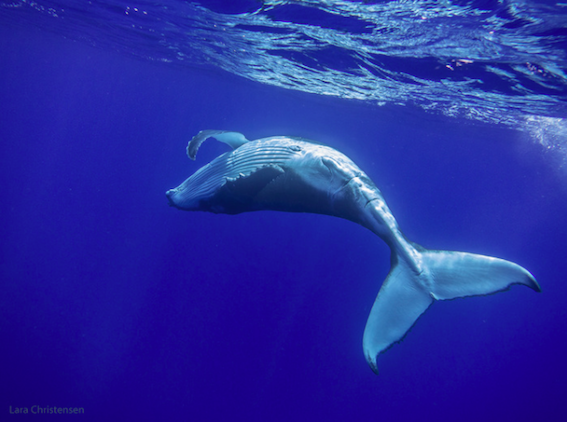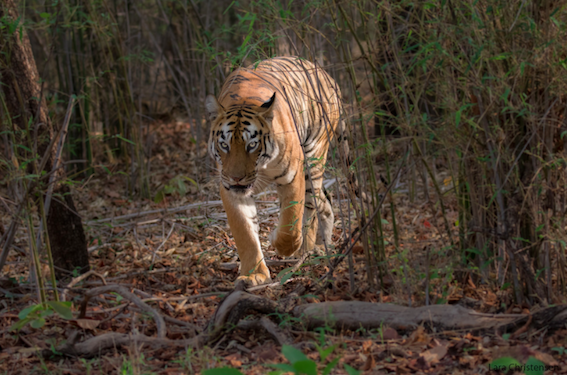Earth Tales Interview
Photographer Lara Christensen
Welcome to EARTH TALES! A series of interviews and ‘Tales from the Earth’ from inspirational people whom are making a stance in the travel world and animal kingdom. We’ll be interviewing poignant people from travel & wildlife photographers, film makers, explorers, conservationists, biologists and adventurers.
To kick off our very first ‘Earth Tales’ is wildlife and landscape photographer extraordinaire - Lara Christensen. Hailing from Frankfurt in Germany with Scandinavian roots, her wanderlust to explore and capture images has taken her all over the globe. She is not just an epic photographer but she also wanders to the ends of the earth in pursuit of the perfect image and being a pure adventurer at heart, visiting 82 countries to date. Recently, having her images featured on BBC Earth we wanted to take the time to get to know her, pick her brains about her extraordinary travels, her passions about keeping our planet protected and get to know what it feels like to have ventured to so many places.
BW: You're photography focuses on nature and wildlife. You enjoy exploring the most remotest corners of the earth. Which undiscovered location was your favourite to visit and why?
LARA: When I travel I tend to avoid the busy cities and get out into nature as much as I can. The most rewarding feeling for me is to know you are not going to meet any other person for miles. My favorite places have always been the extreme ones – so the thrill of watching lava flowing from an active volcano, spending the night in the Namibian desert under an amazing night sky and hiking through Patagonian mountain ranges have been the moments I felt most alive. The place that will always have my heart though is the Arctic – extreme cold, icebergs and polar lights keep me coming back.
BW: With today's current climate and challenges that are facing our earth, how do you feel about these problems and are there any examples you have seen that had an impact on you whilst traveling?
LARA: In fact the pollution I’ve seen all around the world is shocking. In many cities it’s not even possible to breath without your lungs burning from smog and emissions. Our society needs to focus on sustainability as an essential requirement for securing the future of our planet. The main source of our emissions is the use of fossil fuel. To keep the climate safe, global greenhouse gas emissions must be reduced radically. A start would be to only allow new built power plants and cars that use renewable energies. Additionally, countries, companies and citizens that emit CO2 should pay a tax to punish the consumption of oil, gas and coal. This way, it would be possible to generate resources to enable access to clean water and sanitation in poorer counties.
Moreover, it is necessary to change our own patterns of consumption. Surprisingly, the fashion industry has become one of the most polluting industries, producing even more emissions than flights and maritime shipping. In fact, so much cheap clothing is produced, that 60 % of it is disposed within a year of production. Many companies burn large amounts of clothes worth millions of dollars if they don’t sell well or if fashion trends change too quickly. I feel that personal choices do actually matter and individual actions of consumers can be the start of a much-needed change.
BW: Tell us about your experience photographing whales underwater and how did it feel getting so close?
LARA: Photographing whales under water is like no other experience. They are unique creatures, extremely intelligent and very curious about interactions with the world around them – including humans. It’s only when you get into the water with them that you realize how massive they are. I have always had the feeling that they know about their size though, so they act gentle and careful. It’s such an amazing gift and sign of trust that female whales allow their calves to play with us, at times leaving almost no space between them and you. It makes you feel humble and responsible for their fate.
BW: You shoot many desert islands, which one was your favourite and most extraordinary of them all? Have you ever stayed on a desert island on your own?
LARA: The most beautiful islands I’ve photographed so far are the Rock Islands of Palau – an island country located in the western Pacific Ocean in the region of Micronesia. They consist of about 300 little islands made of limestone or coral in a lagoon of beautiful turquoise water home to mantas, sharks and even species of stingless jellyfish you can swim with. It’s in these waters I had my first encounter with wild dolphins. Suddenly there were hundreds of them swimming around our boat – of course I had to jump in! Lately scientists discovered that dolphins are capable of a highly developed spoken language which closely resembles human communication, consisting of pulses, clicks and whistles. Listening to their sounds left me speechless. I often feel it’s these unexpected moments, are the most memorable.
I had the chance to stay on a deserted island in the Okavango Delta in Botswana. Only a few months each year the water level of the Okavango River reveals hundreds of tiny islands which are uninhabited. You can get there by Mokoro - a traditional dugout canoe.
BW: Which place on earth had the most impact on you personally and changed you as a person?
LARA: My first trip to Africa in 2012, which was part of a seven months world trip, had the most impact on me personally. I was overlanding from Kenya to South Africa when I realized I really don’t need any more possessions than those in my backpack. Clearing your life from (material) things you don’t actually need is liberating. It keeps you from defining yourself through the things you own and gives you the chance to think about what it really is that makes you happy.
BW: If you could live anywhere in the world, where would it be and why?
LARA: As much as I love traveling, I love coming home as well. Having a home base to return to makes traveling even more rewarding as you get to appreciate the best of both worlds. Home for me is where my husband, family and friends are. That’s why I’m happy living near Frankfurt in Germany, close enough to one of Europe’s busiest airports to easily travel anywhere from here. Having that home base, I love spending some time in the winters of Arctic watching polar lights and travel to Africa in summers.
BW: Have you ever encountered a near-death experience photographing a wild animal?
LARA: The most dangerous trip I took was to Virunga National Park in the Democratic Republic of the Congo to photograph mountain gorillas. There are only about 880 left and they share more than 98% of their DNA with humans. No mountain gorilla ever survived in captivity, so gladly they are not kept in zoos. Virunga is Africa’s oldest National Park and also one of the most dangerous conservation projects in the world: Several armed rebel groups operate inside the park generating their income by poaching, armed robberies and kidnapping. Over 700 heavily armed rangers are charged with protecting the vast reserve.
Shortly after my visit, rebels murdered several park rangers and kidnapped two British tourists and their driver. The park has been closed for tourism since then.
BW: What is the most bizarre thing you have experienced on your travels?
LARA: The Witches Market in La Paz, Bolivia, is a bizarre place to visit. You can buy all kinds of potions and spells that can help you with any problem you might have, including lama fetuses, snakes, naked statues of people, dried frogs and turtles, owl feathers and weirdly shaped black candles. On the same day I cycled the world´s most dangerous road, the “Death Road”, passing lots of intimidating precipices and even more roadside memorials.
BW: BornWild loves to travel off the beaten path, where would you recommend us to do our next adventure and why?
LARA: Photographing wild tigers in India is very exciting. they are elusive and much harder to spot than other big cats. There’s nothing quite like watching a tiger walk straight towards you, your heart pounding when you’re able to make eye contact.
BW: What would you recommend to our readers who would like to travel more but have a limited budget?
LARA: Limited budget doesn’t need to keep you from traveling. I think it is all about setting your priorities right. Try to only buy things you really need and consider doing a side job on the weekends to save some money. If you plan around off-peak travel times and stay in hostels or better – go camping, you don’t need that much money to travel for a few weeks. Consider working abroad, for example in a hostel, if you would like to stay longer. Try to stay flexible to take advantage of deals and do the research on the places you’d like to go: Read blogs, talk to other travelers, eat local street food, use public transport and skip the booze ☺
BW: Lastly, which animal is your spirit animal and what characteristics do you have in common?
LARA: I’ve always loved sea turtles. They might not be the fastest or most impressive animals, but they are wise because of living a long life, they are connected to their homes as every year they return to the beach where they were born to lay their eggs. They cover huge distances and have a peaceful relationship with their environment. They stay grounded even in moments of huge waves, are determined, persistent and trust their path no matter what.
If you love wild animals and want to make an impact
Click here: Find out how you can help more projects









